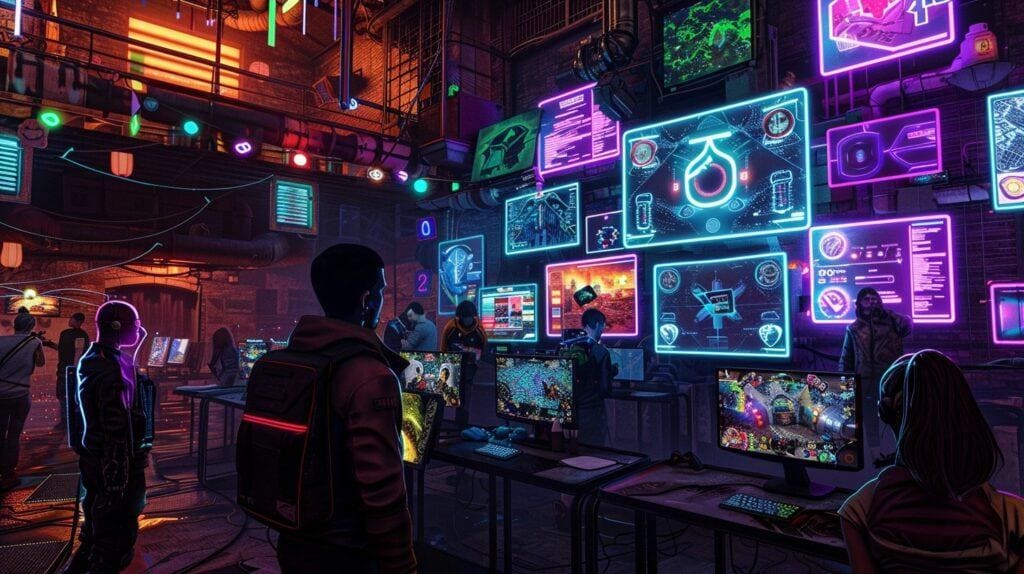Unlocking Immersion: The Psychology of Visual Feedback in Games
In the rapidly evolving landscape of interactive digital experiences, creating profound user engagement is paramount. It's not merely about presenting information; it's about crafting an environment where users feel connected, informed, and truly immersed. The cornerstone of this connection often lies in the subtle yet powerful realm of visual feedback. Without clear, intuitive visual cues, even the most innovative concepts can struggle to captivate an audience, leaving them feeling detached or uncertain about their interactions.
Consider the fundamental human need for immediate response. When we interact with the physical world, our actions are met with instant sensory feedback – a door creaks, a ball bounces, a light switch clicks. This natural expectation extends seamlessly into digital realms. When a user presses a button, performs an action, or achieves an objective within a digital environment, the absence of a discernible visual reaction can lead to confusion, frustration, and a diminished sense of agency. This psychological gap can significantly hinder the overall user experience.
Visual feedback serves as the primary language through which a digital system communicates with its user. It translates complex processes and outcomes into easily digestible visual information. From subtle animations confirming a successful input to dramatic effects signifying a major event, these visual signals guide the user's perception and understanding. They clarify what is happening, why it is happening, and what the user's next logical step might be, fostering a sense of control and predictability essential for sustained engagement.
The strategic implementation of visual feedback goes far beyond mere aesthetics; it taps into core psychological principles of learning and motivation. Effective visual cues reinforce desired behaviors, provide clear indications of progress, and help users quickly grasp the underlying mechanics of an interactive system. When users can effortlessly interpret the consequences of their actions through visual means, their confidence grows, leading to deeper exploration and a more rewarding overall experience within any digital offering from TriNimbusopho.
👁️🗨️ Immediate Clarity and Action Confirmation
The most immediate function of visual feedback is to confirm user actions and provide clear status updates. When a user interacts with an element, whether it's clicking an icon, selecting an option, or performing a specific maneuver, an instant visual response is crucial. This could be a button changing color, an item highlighting, or a brief animation indicating that an input has been registered. This instantaneous confirmation eliminates ambiguity, reassures the user that their input was recognized, and prevents repetitive actions born out of uncertainty. Without this immediate clarity, users can quickly become disoriented, questioning whether their commands were processed correctly or if the system is even responsive.
Beyond simple confirmation, visual feedback provides vital information about the state of the system or the consequences of an action. Consider indicators that show progress, remaining resources, or the impact of a decision. These visual cues are not just cosmetic; they are functional elements that empower users to make informed choices. They transform abstract data into tangible, understandable representations, allowing users to intuitively grasp complex scenarios and adapt their approach. This continuous loop of action and visual reaction forms the backbone of an intuitive and responsive interactive experience, making every interaction feel meaningful and purposeful.
💖 Emotional Resonance and Narrative Reinforcement
Visual feedback extends beyond purely functional communication; it plays a profound role in shaping the emotional landscape of an interactive experience. The aesthetic quality, timing, and intensity of visual cues can evoke specific feelings, reinforcing the narrative or overall mood. A soft glow might indicate a positive outcome, while a jarring flash could signify danger or a setback. These emotional triggers are powerful tools for immersion, drawing users deeper into the world and making them feel more connected to the unfolding events. Carefully designed visual responses can amplify moments of achievement or tension, making the user's journey more impactful and memorable.
🧠 Strategic Information and Skill Development
Effective visual feedback is also instrumental in conveying strategic information and facilitating skill development. Complex systems often require users to understand various states, abilities, or environmental factors. Visual indicators can quickly communicate critical data, such as the readiness of a particular function, the vulnerability of an opponent, or the optimal path forward. By presenting this information visually, users can process it much faster than through textual descriptions alone, enabling quicker decision-making and more sophisticated strategic planning. This visual guidance supports the learning curve, allowing users to master intricate mechanics and develop advanced skills over time, leading to a more profound sense of accomplishment.
✅ Key Takeaways for Enhanced Engagement
Thoughtful visual feedback is crucial for compelling digital experiences. It acts as the primary communication channel, ensuring clarity, responsiveness, and intuitive interaction. Prioritizing clear, consistent, and relevant visual cues is vital for deep user immersion.
Beyond functionality, visual feedback is a powerful tool for emotional connection and narrative reinforcement. It shapes user perception, evokes feelings, and amplifies key moments. Understanding its psychological impact helps craft environments that resonate, transforming interactions into memorable journeys.
A commitment to superior visual feedback design reflects user-centric development. For TriNimbusopho, this means refining digital communication, ensuring every visual cue contributes to a seamless, engaging, and rewarding experience. This meticulous attention elevates interactions.


There are no comments yet, you can be the first to leave one